Gallery
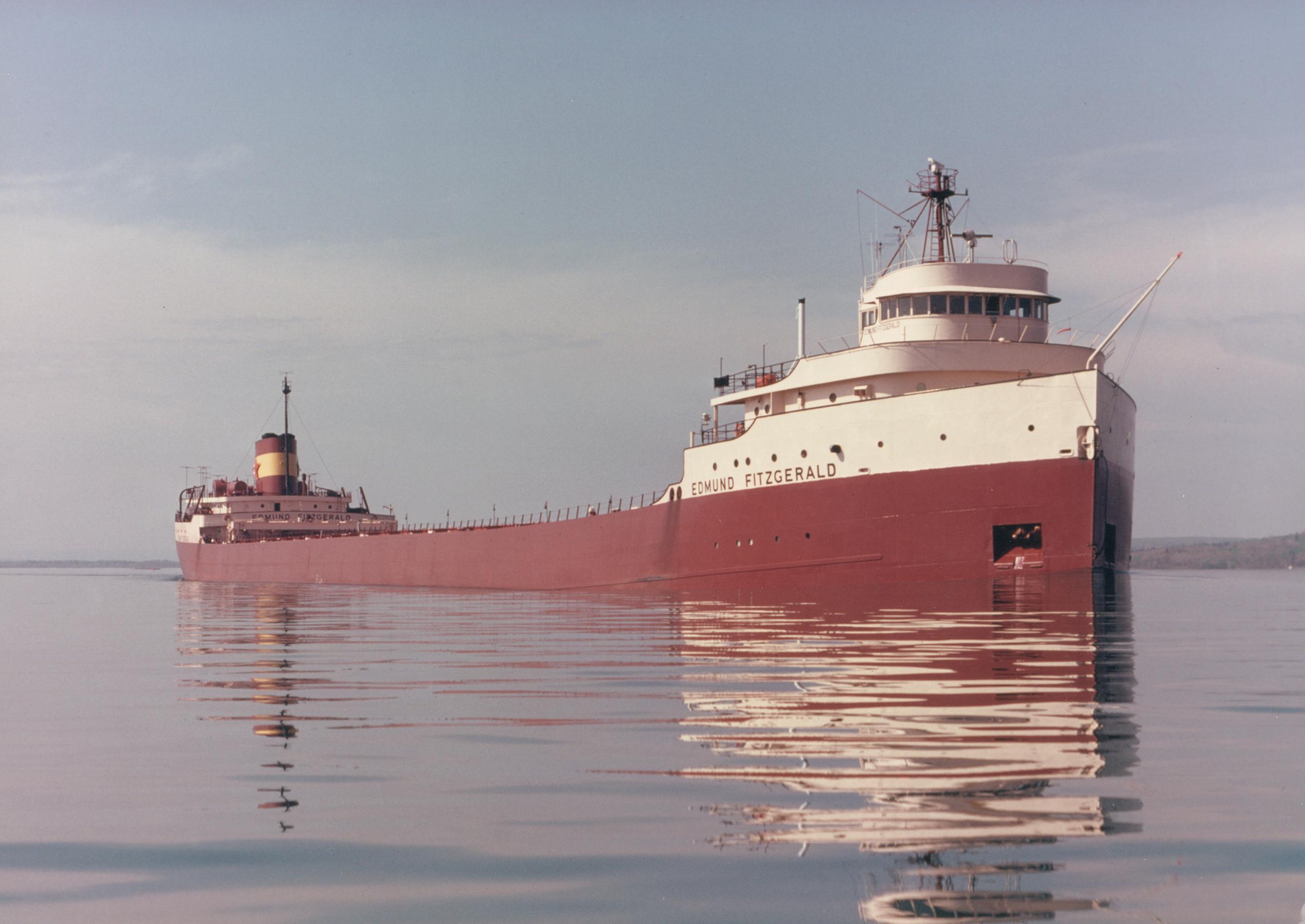
On the St. Marys River, Michigan. Photo by: Bob Campbell. UW Great Lakes Maritime History Project.
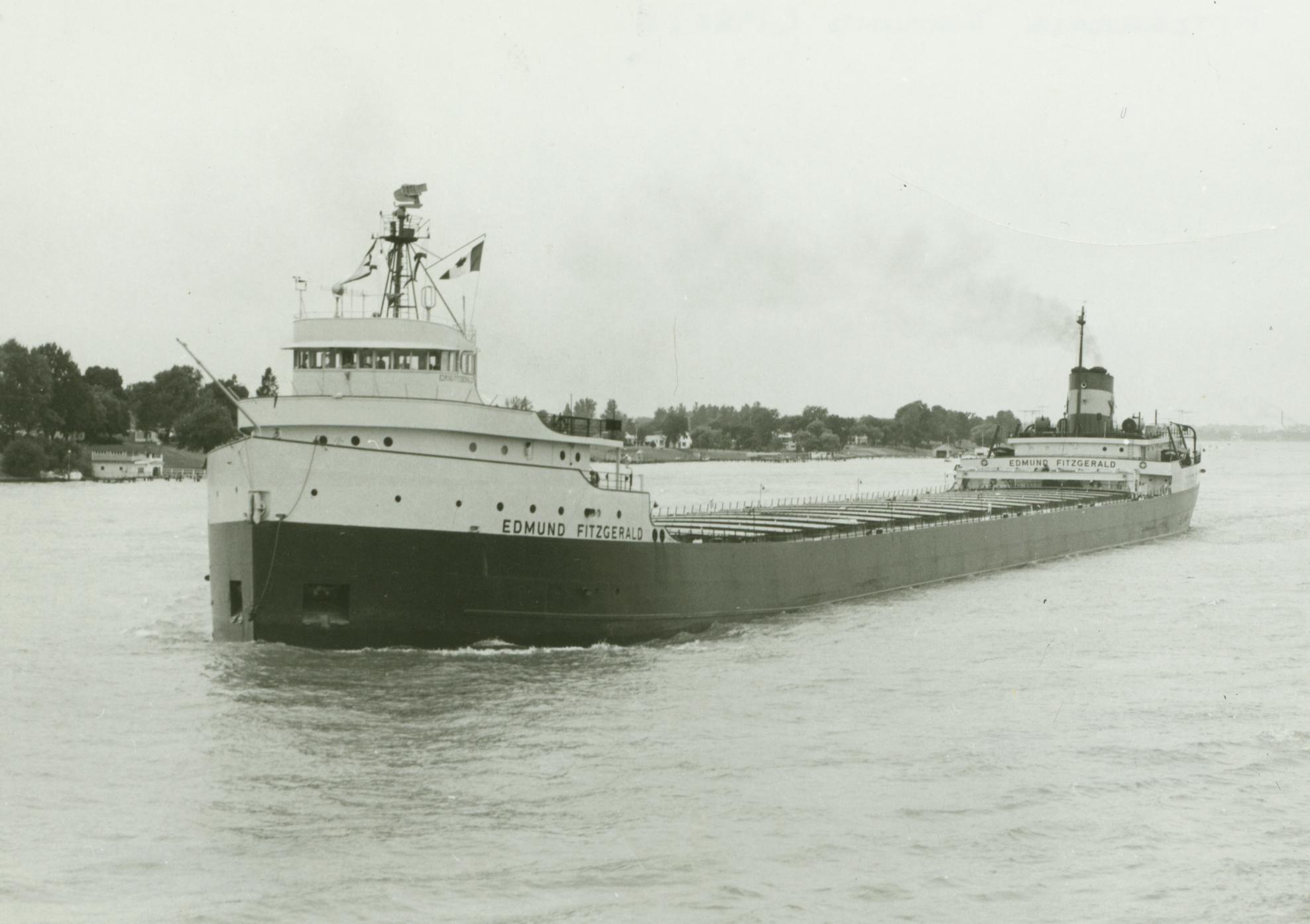
In Canadian Waters. UW Great Lakes Maritime History Project.
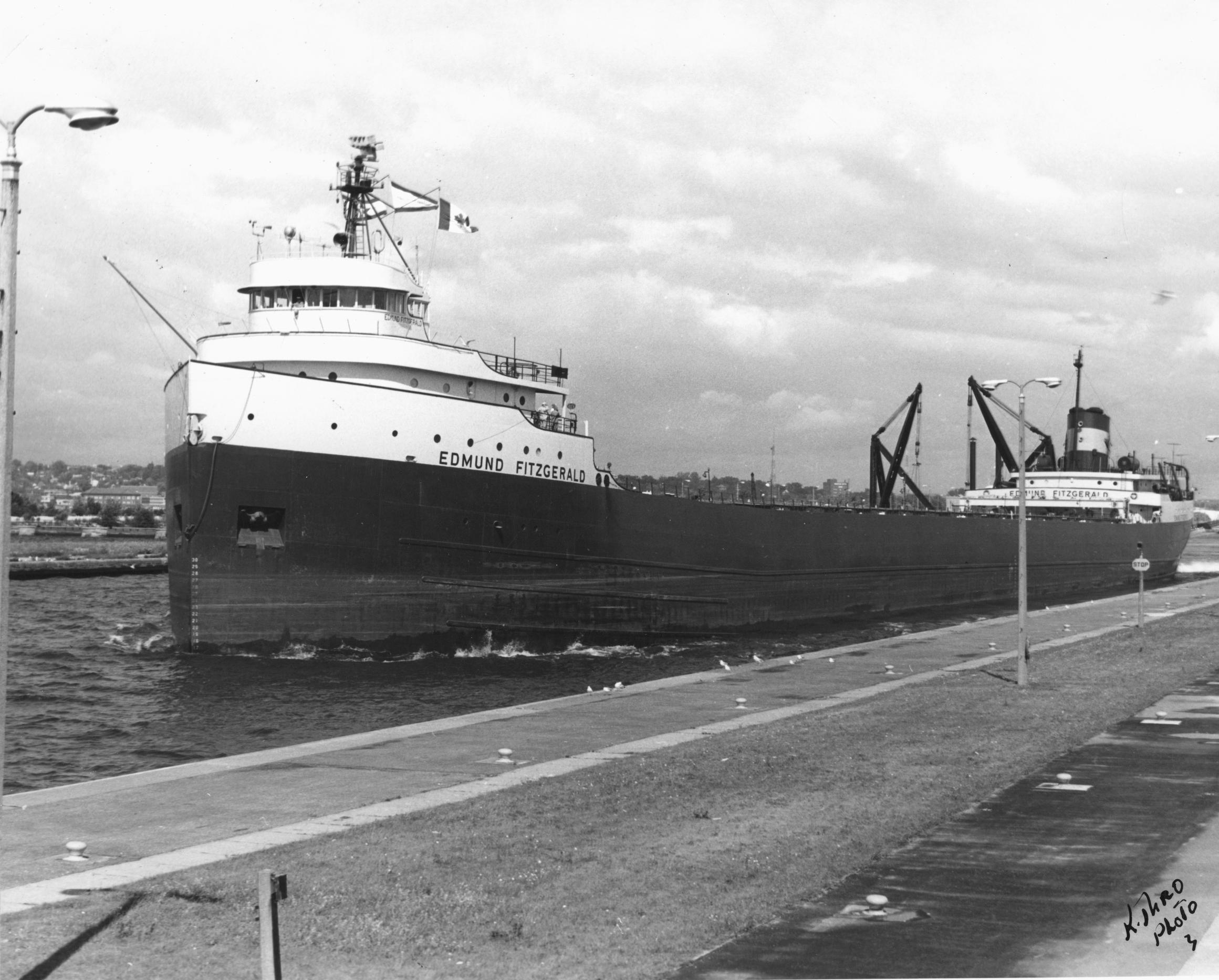
The Edmund Fitzgerald entering Saint Lawrence Seaway Lock. Photo by Kenneth Thro. UW Great Lakes Maritime History Project.
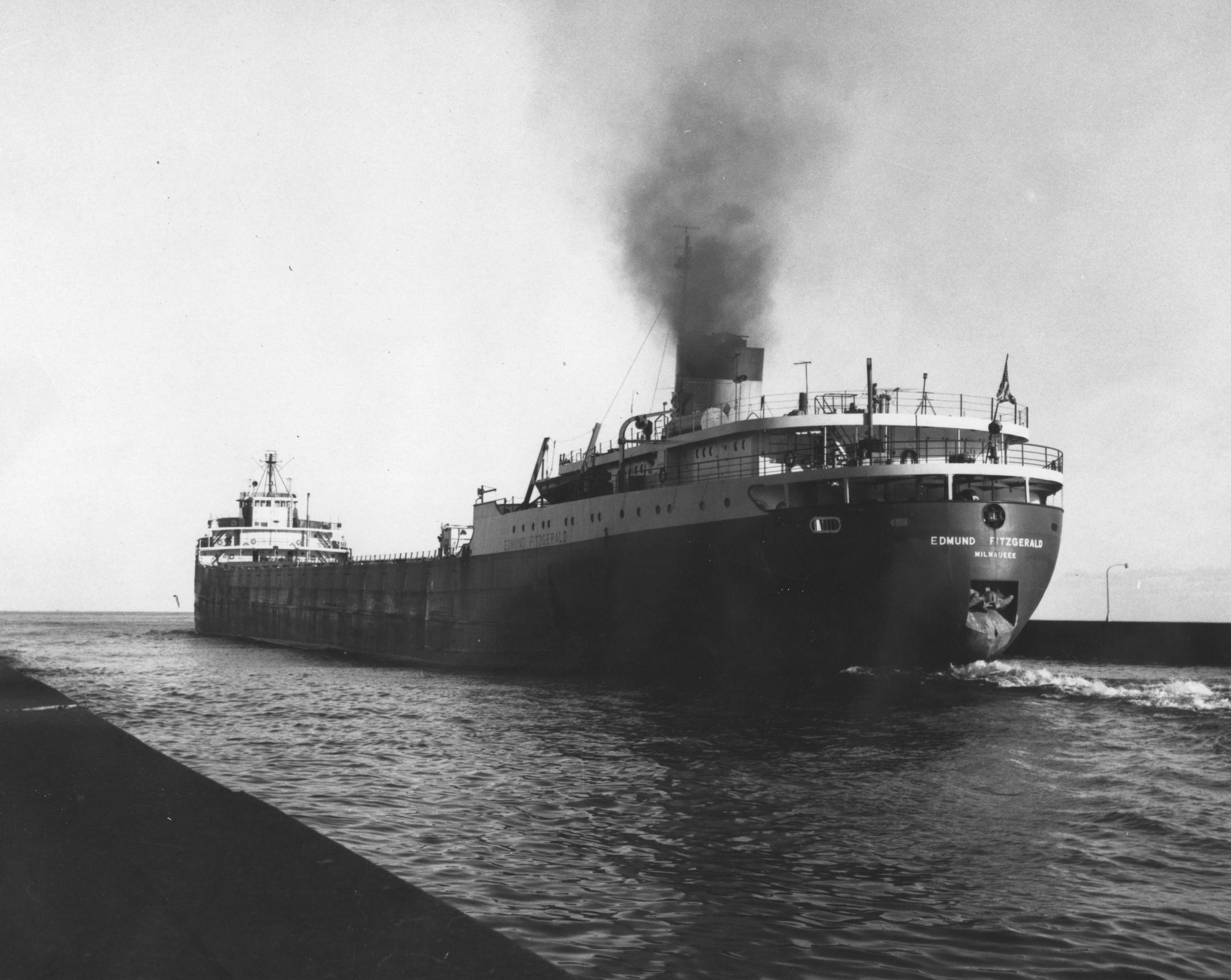
Departing Duluth. C Patrick Labadie.
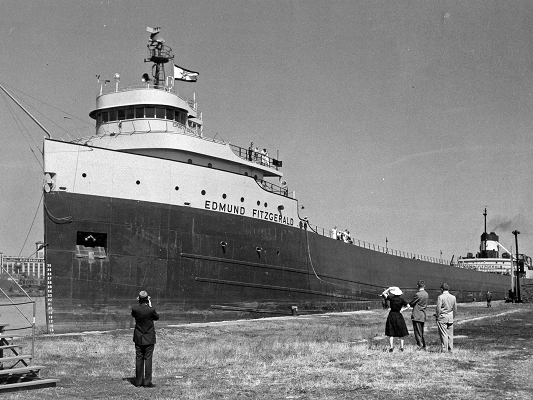
Fitzgerald docked at Jones Island, Milwaukee July 1959. Wisconsin Marine Historical Society.
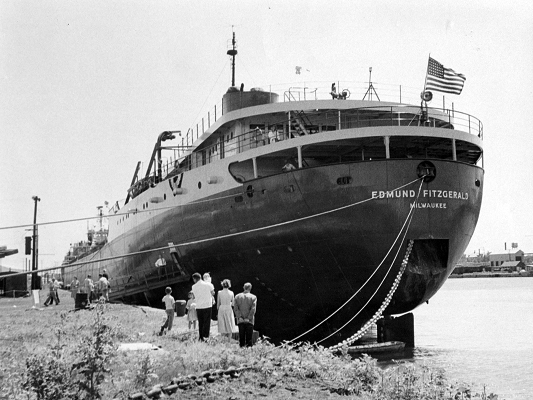
Fitzgerald docked at Jones Island, Milwaukee in July 1959. Wisconsin Marine Historical Society.
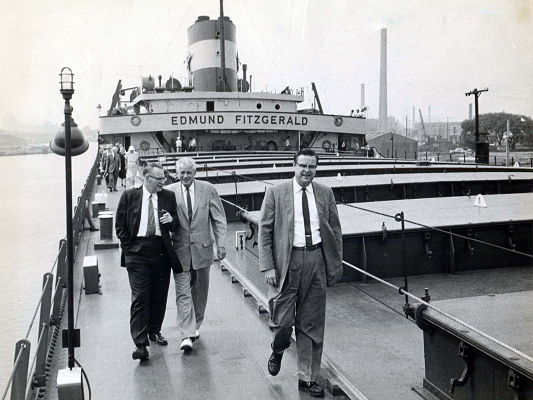
Guests tour the deck of the Fitzgerald in July 1959. Wisconsin Marine Historical Society.
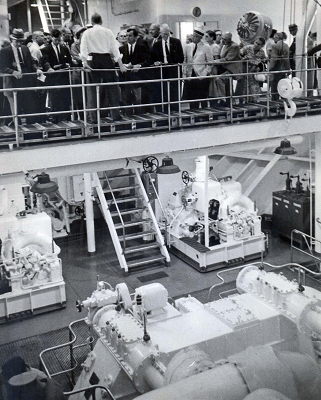
Guests tour the Fitzgerald's engine room in July 1959. Wisconsin Marine Historical Society.
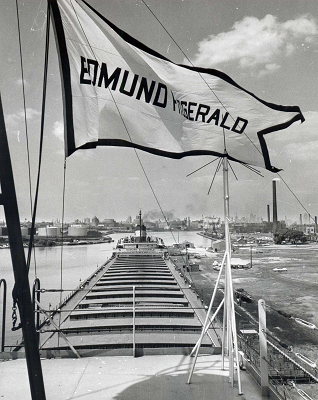
The Edmund Fitzgerald flying it pennant in its homeport of Milwaukee in July 1959. Wisconsin Marine Historical Society.
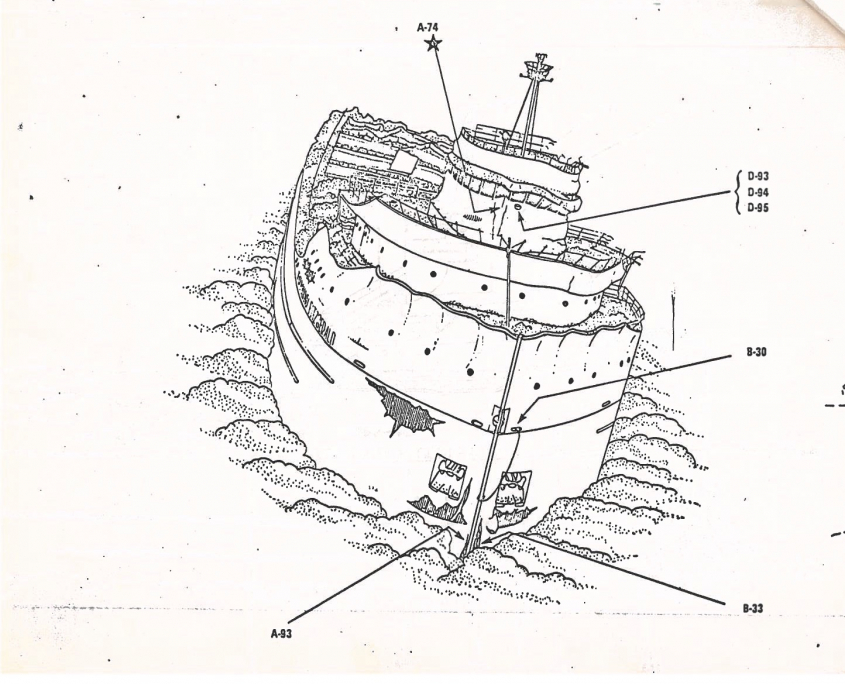
Drawing of the bow from the US Coast Guard Marine Casualty Report SS Edmund Fitzgerald sinking in Lake Superior on 10 November 1975. National Museum of the Great Lakes.
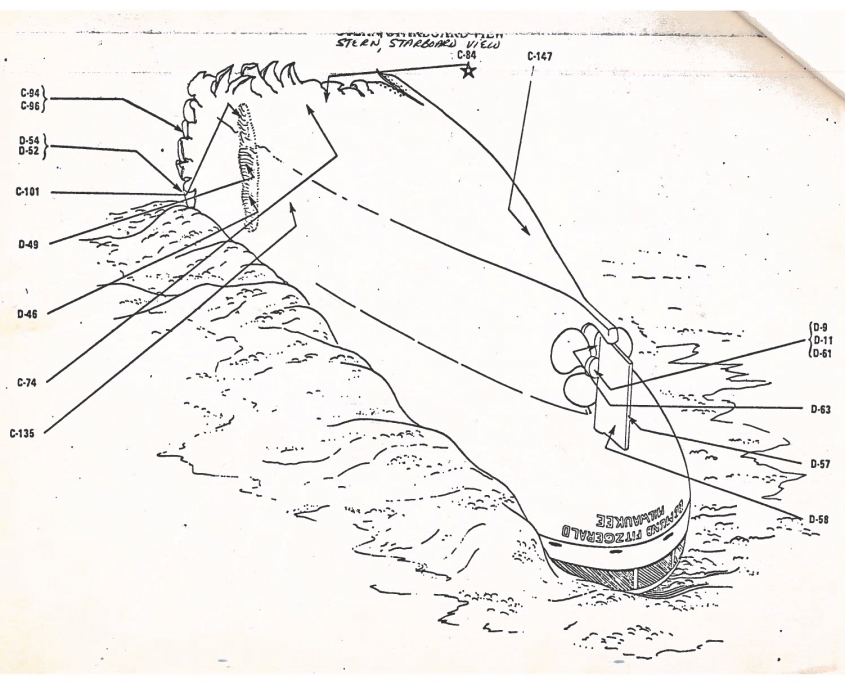
Drawing of the stern from the US Coast Guard Marine Casualty Report SS Edmund Fitzgerald sinking in Lake Superior on 10 November 1975. National Museum of the Great Lakes.

 Confirmed Location
Confirmed Location
 Unconfirmed location
Unconfirmed location